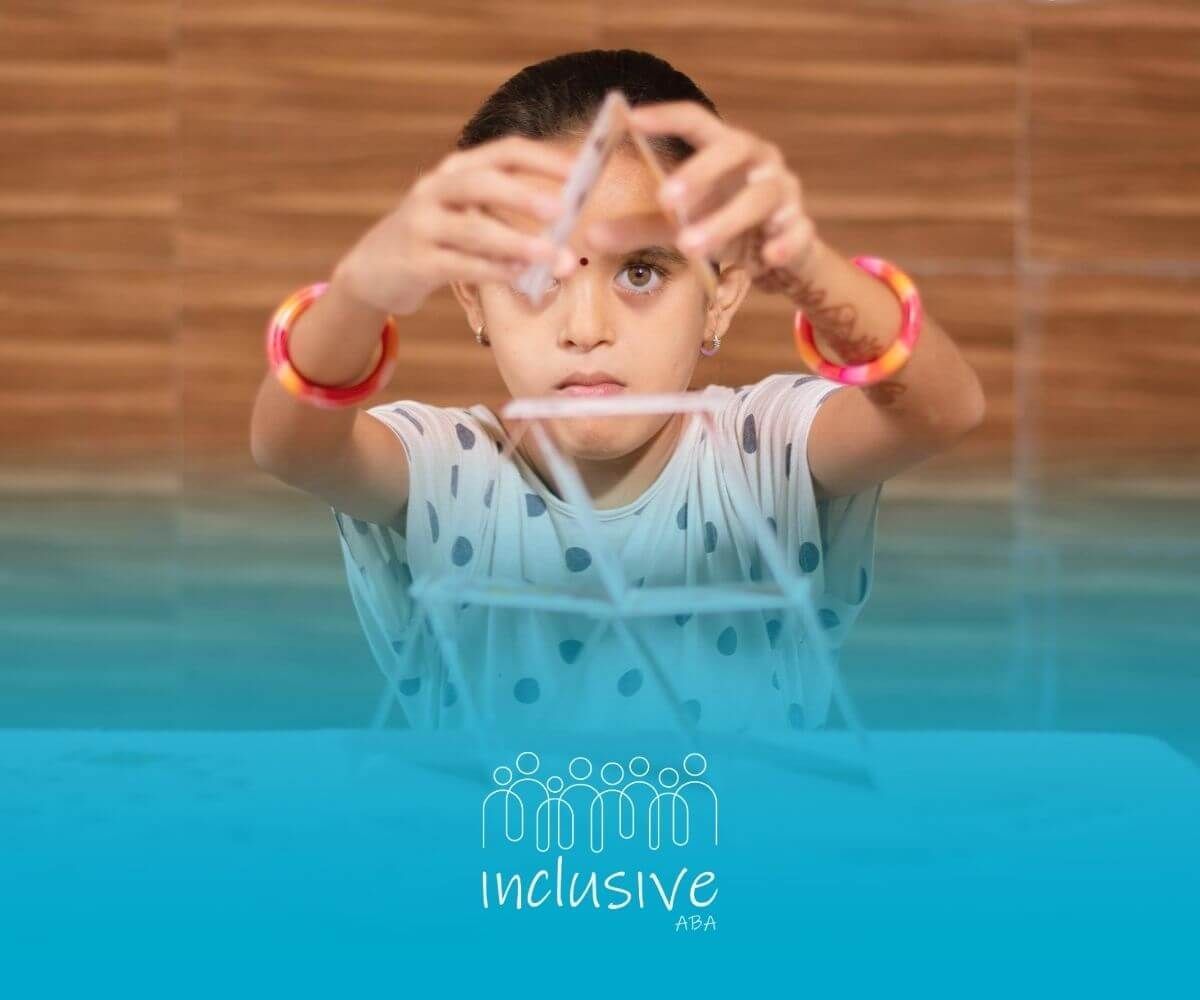Learn What Are the Two Teaching Methods of ABA Today
Applied Behavior Analysis (ABA) therapy has changed behavior analysis by giving effective ways to improve communication, social behavior, and learning skills. This approach is based on scientific methods and is life-changing for people with developmental challenges like autism spectrum disorder (ASD), where inappropriate behaviors can often be a concern. ABA therapy uses special teaching methods to meet individual needs. Two major methods used are Discrete Trial Training (DTT) and Natural Environment Teaching (NET). These methods work together to provide a complete way to improve behavior and increase quality of life.
Understanding ABA Therapy and Its Importance
ABA therapy is a key part of behavior analysis. It aims to understand and improve behaviors that affect learning and social skills through ABA interventions. By studying how different environments and stimuli affect behavior, ABA therapy creates customized and measurable plans.
ABA therapy is very important for people with autism spectrum disorder and other developmental issues. It helps these individuals learn vital life skills. This promotes independence and has a positive effect on their behavior in different situations. This organized but flexible approach leads to real progress in all areas of development.
Definition and Goals of ABA Therapy
ABA therapy is a proven method in behavior analysis. Its aim is to understand how our surroundings affect our actions. This knowledge is then used to encourage positive changes in behavior. Applied Behavior Analysis breaks down complex skills into smaller, easier steps. This makes learning clear and simple.
In this organized approach, therapists try to boost helpful behaviors like social skills and communication, while reducing any negative actions. By using consistent, data-driven methods, they make informed decisions that lead to positive outcomes and track progress over time. This guarantees real results.
The main goal of ABA therapy is not just to teach new skills, but also to see how these skills apply in daily life. It uses techniques that foster independence and adaptability. This helps individuals regulate themselves and succeed in school, social settings, and everyday tasks. As a method backed by evidence, ABA therapy ensures that every approach fits the client's specific needs and goals.
Why Focus on Teaching Methods in ABA?
Teaching methods are very important in ABA therapy. They make sure that instruction is organized and effective. These strategies help make learning smoother and lead to clear results.
ABA strategies, like positive reinforcement, play a big role in helping people learn the behaviors we want to see. They shape how we teach skills and help individuals keep what they learn. This lets them do well in many areas of their lives. When therapists focus on teaching methods, they can ensure that learning happens in a planned way that fits each person’s needs.
Good teaching strategies also help break down difficult tasks into smaller, easier steps. This makes it simpler for someone to acquire new skills. Whether it’s improving communication, academic skills, or social behaviors, the teaching approaches in ABA therapy help build a path for progress. They help connect where a learner is now with where they can be in the future, supporting growth in both organized and flexible places.
Overview of ABA Teaching Methods
ABA therapy uses different teaching methods to meet each person’s learning needs. Discrete Trial Training (DTT) and Natural Environment Teaching (NET) are the most common. DTT uses structured and repetitive tasks. This helps learners focus and gain skills step-by-step. On the other hand, NET adds learning moments to everyday activities. It makes skill development feel natural and fun.
Both methods can change based on the learner's needs. This makes ABA therapy a tailored experience. Together, they create a strong way to achieve positive behavioral and developmental results.
How Teaching Methods are Integral to ABA Success
Both DTT and NET are important ABA methods. They help by adjusting to the specific needs of learners. These methods focus on skill acquisition. They make sure that progress happens through steady and scientific ways.
ABA methods like DTT use a clear format to teach skills one step at a time. Each success builds on the last. This way, learners can reach goals, from communication to daily living skills. NET works alongside this. It creates learning opportunities in real-world situations, making learning feel more important and helping people remember better.
When you use these methods together, they produce great results. Balancing the clear structure of DTT with the freedom of NET helps ABA therapy enhance learning. This complete approach ensures people learn skills and apply them in various settings. It supports long-term growth and independence.
The Role of Structured and Flexible Approaches
ABA therapy combines two approaches: structured methods like DTT and flexible strategies like NET. Structured methods give clear instructions and repetition. This helps learners master skills in a focused learning environment.
Flexible methods use the natural environment. They create organic learning opportunities, like learning communication skills during play. This makes skills useful in real life. NET is adaptable. It matches goals with the learner's interests and speed, encouraging motivation.
Together, structured and flexible methods work well in ABA therapy. Structured methods build a strong skill foundation. Flexible methods make learning fun and relevant. This balance supports all developmental needs. It offers personalized solutions that promote growth and improve the quality of life for learners.
In-depth Look at Discrete Trial Training (DTT)
Discrete Trial Training (DTT) is a method that makes teaching easier. It does this by breaking complex skills into the component tasks of a behavior, ultimately simplifying the learning process. Behavior analysts use clear prompts and direct instruction. This helps young children be successful, especially those with autism spectrum disorder. DTT sets specific goals to help them learn in different settings. It promotes skill acquisition through repetition and positive reinforcement. This method also allows for checking target behaviors. It makes sure each child gets the right support in a good learning environment.
Key Components of DTT
Discrete Trial Training (DTT) depends on a few key parts that help people learn new skills. First, tasks or specific skills are split into smaller, manageable steps. This method is called task analysis. It helps teach difficult ideas in a clear way.
Next, clear instructions and prompts are very important in DTT. The first step of providing learners with clear directions is crucial to finish a task. They also get extra help, like verbal cues, gestures, or physical support if they need it. As the learner gets better, the prompts are lessened to give them more independence.
Finally, immediate feedback is a crucial part of DTT. Positive reinforcement, such as praise or rewards, is given for correct answers. On the other hand, neutral or correcting feedback is provided to keep things clear without discouraging the learner. This approach not only teaches skills well but also boosts motivation and participation through consistent practice.
Benefits and Challenges of Using DTT
The benefits of Discrete Trial Training (DTT) come from its clear structure, which works well for basic skills. Learners understand better through repeat practice and quick feedback. This makes DTT great for improving communication, daily life skills, and school subjects.
However, one issue with DTT is that it depends a lot on structured settings. While this helps reduce distractions, it can be difficult for people to use their skills in real-life situations. To solve this, it's important to mix DTT with more flexible methods like Natural Environment Training (NET).
Another challenge is that some learners might not find the repetitive aspects of DTT exciting. Therapists try to fix this by adding different rewards and making sure tasks match the learner's interests. Even with these challenges, DTT is very effective for building skills and is an important part of ABA therapy.
Exploring Natural Environment Teaching (NET)
Natural environment teaching (NET) uses real-life situations to help children learn skills. This method includes learning opportunities in everyday activities. It lets kids practice communication skills and social skills in a natural way. During play or daily routines, NET builds a supportive learning environment with a focus on the generalization of skills. Here, behaviors are shaped using natural teaching strategies. The focus on generalization means kids can use their new skills in various settings. This approach improves their overall development and quality of life.
Principles of NET
The principles of Natural Environment Teaching focus on learning in real-life situations. This method uses what the learner enjoys to create fun and meaningful experiences that promote specific behaviors. Unlike strict teaching methods, NET uses natural reinforcers. These are rewards linked to the activity, like playing a favorite game after finishing a task.
A key part of NET is using natural opportunities. Skills are taught as they come up in everyday life, making learning feel relevant and easy. For example, a child might ask for items while playing or help set the table at mealtime.
Another key idea is skill generalization. NET takes learners to different environments, around different people, and exposes them to various things. This helps make sure that learned behaviors can be used in many areas. By focusing on real-life application, NET gives learners practical skills that help them be independent and interact well in different situations.
Advantages and Limitations of NET
NET has many benefits. It helps people engage and stay motivated by matching tasks to their interests. It also helps learners use their skills in different situations. The hands-on nature of NET improves communication and social interaction, making it a lively and adaptable approach.
But, NET has some limits. It can be hard to create natural opportunities all the time. Some skills may need a more structured way of teaching instead of just learning naturally. Also, without enough repetition, it might take longer to master tough skills.
Even with these issues, NET is an important ABA method. It is especially useful for learners who do better in relaxed and flexible learning environments. Therapists can mix NET with methods like DTT. This way, they create a balanced teaching plan that focuses on skill acquisition and real-world use.
Implementing ABA Methods in Different Settings
ABA teaching methods, such as DTT and NET, work well in different places, like school and home. In schools, structured methods often take the lead. They provide clear help for academic skills.
At home, more flexible methods like NET fit nicely into daily routines. They help boost social and communication skills. It is important to create supportive environments that meet the learner's specific needs. Together, these settings help learners succeed in both structured lessons and everyday activities.
Adapting Methods for School vs Home Environments
Different environments need specific ABA strategies to help children learn best. In schools, structured methods like DTT offer a clear way to teach important concepts and skills. The clear rules and repeated practices help kids focus and grow their confidence while learning key skills.
At home, flexible methods like NET enable parents to fit skill-building into daily routines. For example, parents might help their child learn communication skills by encouraging them to ask for things during meals. This makes learning practical and useful right away.
Combining structured and flexible methods helps kids in both school and home settings. It's important for therapists, teachers, and parents to work together to keep rewards consistent. This helps reduce behavior problems. By changing methods to suit each environment, ABA therapy supports big growth in all areas of a child's development.
Case Studies: Successful Implementation Examples
Case studies show how special ABA strategies can lead to great results. One example is a five-year-old with ASD who had trouble with basic communication skills. This child took DTT sessions that focused on speech development and modeled positive behaviors. By breaking down sentences into smaller steps and giving steady praise, the child went from using single words to making full sentences.
In another example, a therapist used NET to support a six-year-old with social problems. They used learning chances during playdates at a nearby park, creating a social group where the child could practice interacting with peers. This helped the child feel more confident in starting conversations and sharing toys with other kids. This relaxed setting helped the child use social skills in real life.
These success stories highlight how important it is to mix ABA methods to meet each child's needs. Whether using organized DTT or flexible NET, ABA therapy helps learners reach personal and developmental milestones effectively.
Conclusion
In conclusion, it is important to understand the two main teaching methods in Applied Behavior Analysis (ABA). When seeking autism treatment therapy, it’s important to find a provider that offers personalized and effective approaches tailored to your child’s needs. One of the most effective options is ABA therapy, which utilizes techniques such as Discrete Trial Training (DTT) and Natural Environment Teaching (NET) to foster learning and skill development. With the right support, ABA therapy can make a significant difference in your child’s life. Reach out today to find the best solutions for your family’s needs and help your child thrive with targeted, compassionate care.
At Inclusive ABA, we specialize in providing personalized, evidence-based ABA therapy designed to empower individuals with autism to thrive. Whether through Discrete Trial Training (DTT) or Natural Environment Teaching (NET), we tailor our approach to meet your child's unique needs. If you're looking for the best ABA therapy provider in Nevada, Nebraska, or Colorado, reach out to us today to discover how we can support your child's growth and success. Let's work together to unlock their full potential!
Frequently Asked Questions
What distinguishes DTT from NET in ABA settings?
DTT and NET are different in how they are structured and used. DTT is very structured. It breaks tasks into small steps and works in controlled settings. On the other hand, NET is flexible. It uses natural reinforcers and real-life situations to teach skills. Both methods meet unique needs in ABA settings.
How do the two teaching methods in ABA differ from each other?
DTT uses organized methods with clear instructions and repetition. This helps people master skills in controlled settings. On the other hand, NET is more flexible. It focuses on real-life interactions and encourages learning through natural opportunities. These points show the difference between structured and flexible teaching methods in ABA.
Can ABA techniques be applied to different age groups or learning abilities?
Yes, ABA techniques can be used by everyone. They work for all ages and learning abilities. Therapists change their methods to fit each person's development and needs. This helps people improve in communication, social skills, and skill acquisition, whether they are children or adults.
Sources
- https://www.autismspeaks.org/expert-opinion/what-discrete-trial-training
- https://www.commonwealthautism.org/teaching-outside-of-the-table/
- https://www.nimh.nih.gov/health/topics/autism-spectrum-disorders-asd
- https://www.behavior-analysis.org/
- https://pmc.ncbi.nlm.nih.gov/articles/PMC3592489/
Looking for Expert Help? We're Here for You!
Our compassionate and skilled team is devoted to enhancing your child's development through customized ABA therapy. Let us partner with you to create a supportive environment for your child's success.
Discover how we can help your family thrive with expert ABA therapy.
Related Posts







